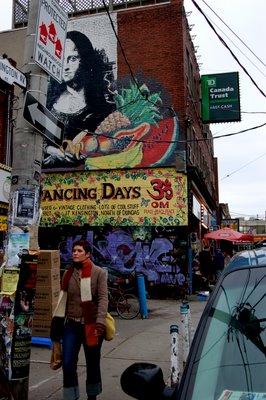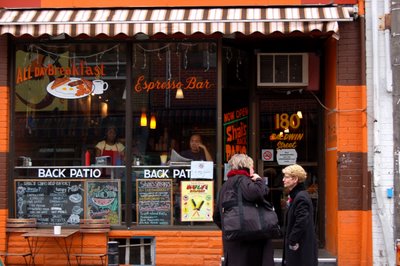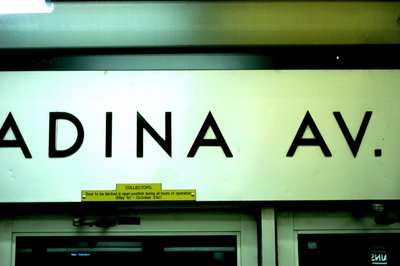 Posted on urbanphoto.net
Posted on urbanphoto.net
The true mark of a city that has shed its pimply adolescent past and gained preeminence is the development of a larger-than-life personality, a personality that is based on layers of collective memories, recollections, human dramas real and ficticious, observed and enacted by oneself. A story of one’s adventures in Camden Town will almost certainly be echoed by someone else’s tale of a London romp; likewise, a hispter’s salacious anecdotes of Saturday night debauchery in the Lower East Side will solicit from others more than just a few recollections of the Lower East Side, and not just from fellow hipsters alone.
It is precisely here that Toronto’s city-building efforts flounder a bit, and the problem is certain even more acute for the multitudes of smaller cities that find themselves on the losing side of the battle for population and talents. Sure, the air might be cleaner, the people friendlier, the street safer, but what does all this matter if your place is constantly mistaken for Anyplace? The occasional appearance in Margaret Atwood and Michael Ondaatje novels aside (and same goes for Montreal and Modeccai Richler/Leonard Cohen), does the Toronto myth mean anything to anyone?
What is particularly vexing about the city government’s shaky sales pitch for Toronto is their obliviousness towards a tremendous resource known as the transit system, which incidentally carries 2.3 million passengers every single day. A cross road in every sense of the word, it is precisely the kind of place where stories take place and memories build upon memories. For a good portions of the 2.3 million passengers, the TTC is an elaborate system of signifiers for their own lives.
For me, the culminative experience of riding the TTC has turned streetcar rides into–excuse the trite metaphor–trips down memory lane: early mornings on the College Streetcar recall brunches on College Street’s brunch row; “501 Queen”–the grandmother of streetcar lines–conjures memories of strolling on beaches near the far east end of that street, and hopping between galleries near the far west end; Dundas Station near Eaton Centre is a sometimes-almost-painful reminder of high school mall rat days.
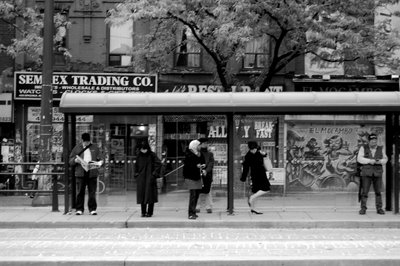
Pooling such individual recollections can be an almost emotionally overwhelming experience, as a Toronto Star contest proved four years ago. In a competition for the best TTC stories, the entries ranged from the bizzarre (man on subway groping own balls under his newspaper) to the touching (couple met on Chaplin Estate bus, happily married for 25 years). The end result is a curious study of people’s hopes and fears, and the irrefutable proof that Toronto is capable of sustaining its own stories– stories that make outsiders and Toronto’s own inhabitants interested in the city.
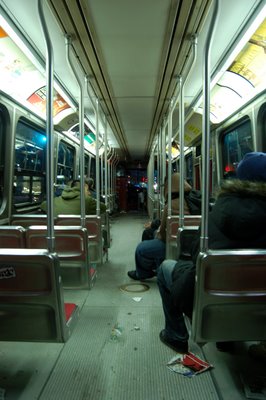
Another part of that system of signifiers is physical design, an area in which the TTC has some inherent handicaps to overcome. The functional-utilitarian interiors of subway stations built in the 70s is a farcry from the grandeur of the Moscow system and has few details that make the NYC subway as intriguing as it is; the TTC logo is also not the London Underground Roundel. But as the TTC stations progress in age, the late modernism of their architectural design is gradually beginning to be appreciated. The special TTC font and its retro-modernism offers further opportunities for exploitation.
A shame then that when a TTC merchandise shop finally opened last year at Union Station, people could find nothing other than crappy t-shirts. What happened to the mugs, pens, specialty maps, books, napkins etc. that any tourist can find at Trafalger Square that bear the London Underground roundel?–Yet another case of squandered opportunity and lack of imagination.

Not all is lost though. Thanks to Matt Blackett of Spacing Magazine, these buttons bearing subways station names and the station’s special tile patterns became a runaway success and was dubbed the “civic pride fashion statement of the year”. Add to that the good work that has been done over at Transit Toronto, suddenly the effort doesn’t seem too bad.
A positive feature of the TTC may help also: the transit system in Toronto is not forsaken ground as far as the middle class is concerned, and is instead heavily used by all economic classes. The transit system thus functions more like the kind of civic hub it’s supposed to be, where one meets who he rarely expects to meet–and isn’t this spontaneity the essence of the urban experience?










